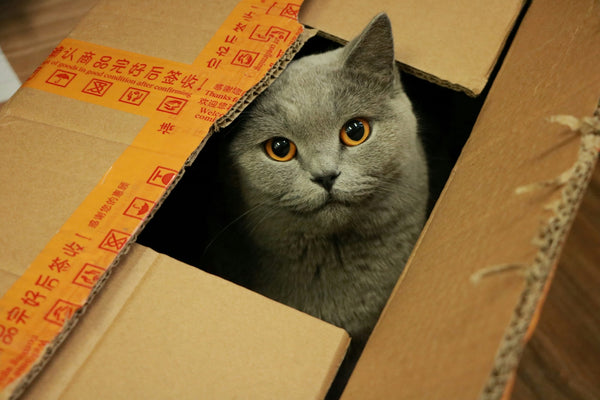
Pawsitive Impact: How Sustainable Practices Improve Pet Wellness
With the current climate crisis, many are adopting eco-conscious lifestyles to reduce their environmental footprint. As this movement gains momentum, we must learn how to extend these sustainable practices to all aspects of our lives – yes, that includes the well-being of our furballs.
In this article, we’ll explore the positive impact of incorporating sustainable practices into pet care and how these can improve pet wellness – showing that it’s not to boost the well-being of our environment, but also our pets.
Sustainable Practices That Improve Pet Wellness
Ever wondered how you can practice sustainability while improving your pet’s health? Below, we’ll share some of the best practices to get yourself involved in:
Using Eco-Friendly Pet Products
Choosing eco-friendly products for our furry companions is one of the easiest and best ways to incorporate sustainability into our day-to-day lives.
Many companies now offer products that use sustainable packaging and other sustainably sourced materials. Before purchasing any pet product, it helps to read the product label to learn more about its source and the materials used to create the product.
Products such as biodegradable poop bags and toys made of recycled plastics are prime examples of eco-friendly pet products. Not only do they save our environment, but also they keep our pets clean and healthy.
>>>Read more about paper vs plastic packaging
Switching to Nutritious and Sustainable Diets
Besides eco-friendly pet products, opting for a more sustainable diet for your pet is a brilliant way to go on our path toward sustainability. When choosing pet food, read the product label and identify if the product is made of ethically sourced ingredients with minimal environmental impact.
Your pet might like meat, but it’s also worth trying other protein-rich meals such as insect-based and plant-based proteins – these foods often have significantly smaller ecological footprint than traditional meat.
About 20% of the world’s fish and meat is consumed by pets, so it isn’t just us humans who contribute to climate change. Meat-based agriculture has always been a significant driver of climate change, and choosing other diet alternatives is a great way to start.
In fact, your pets are getting more protein from insect-based alternatives. For every 100 grams of insect-based food, your pet consumes up to two times more protein. These diets are both sustainable and good for your pet’s health in the long run – switching up your pet’s diet is one way to do your part for the environment while keeping them strong and healthy.
Engage in DIY and Upcycling Practices
Instead of purchasing pet products, why not do things yourself? Try creating pet accessories and toys from repurposed materials. Not only do you make your pet happy, but you also get to make a positive change in the environment.
Cardboard boxes, for instance, are readily available – and cats love them! They make for excellent toys, so a simple box can already be a lot of fun for these little ones. Design these boxes and stack them on top of each other, and you might see your pets climbing up the boxes in no time.
Truly, these DIY practices allow your creative juices to flow. Plus, your pets get to have fun and stay mentally healthy through play.
Additionally, you can upcycle everyday items such as old t-shirts or towels. These can then be transformed into pet beds or durable chew toys that your pets will love. It goes to show that sometimes what you need might just be right in front of you.

Use Natural and Chemical-Free Grooming Products
Choosing natural and chemical-free grooming products is a great way to protect your pet from harsh chemicals while simultaneously safeguarding our environment from further harm. Flea and tick shampoos, for example, contain pesticides such as organophosphates and pyrethrins.
While these chemicals are effective in eliminating fleas and ticks, they pose significant environmental risks. When these chemicals are washed off, they end up in the wastewater. As a result of these chemicals leaching into the water supply, aquatic organisms can be affected by these toxic chemicals – disrupting the ecosystem balance and harming non-target species.
It cannot be emphasized enough – always read the product labels for possibly harmful ingredients. Choose products that indicate that the ingredients are environmentally friendly or biodegradable.
Reduce Carbon Pawprint in All Ways Possible
Other than the previously mentioned sustainable practices, there are still other ways to reduce your carbon pawprint. When taking your pets outdoors, walk or cycle instead of using a motor vehicle to reduce your carbon emissions.
If you’re fond of dressing up your pet, choose functional items like eco-friendly collars and other clothes made of sustainable materials to keep them comfortable.
Cat owners can also choose an eco-friendly cat litter to further reduce their carbon footprint. Opt for litter made from upcycled wood such as okocat natural litter.
Final Thoughts
That wraps up our quick guide to the sustainable practices that improve your pet’s wellness! While the switch may be challenging for some, know that in the end, it will all be worthwhile – you get to do your role in protecting our environment while keeping your pets healthy.









 email us
email us